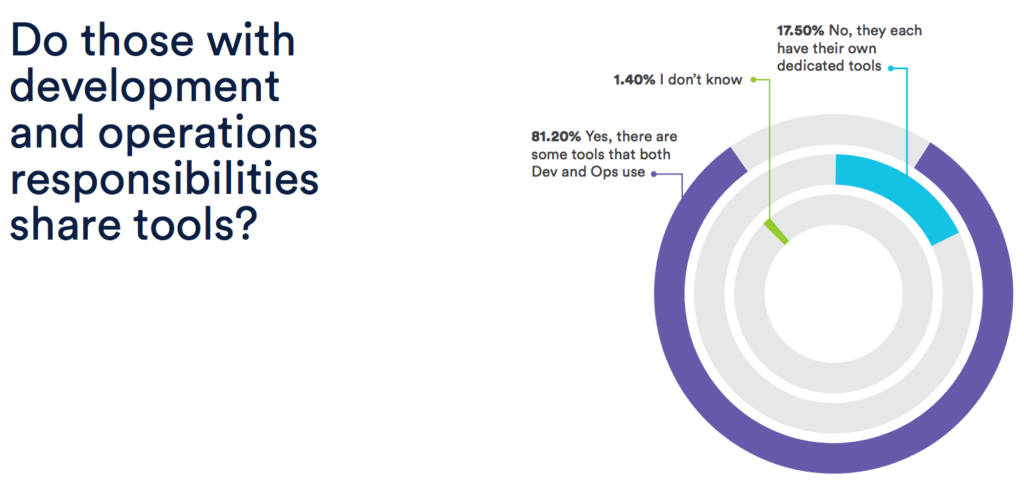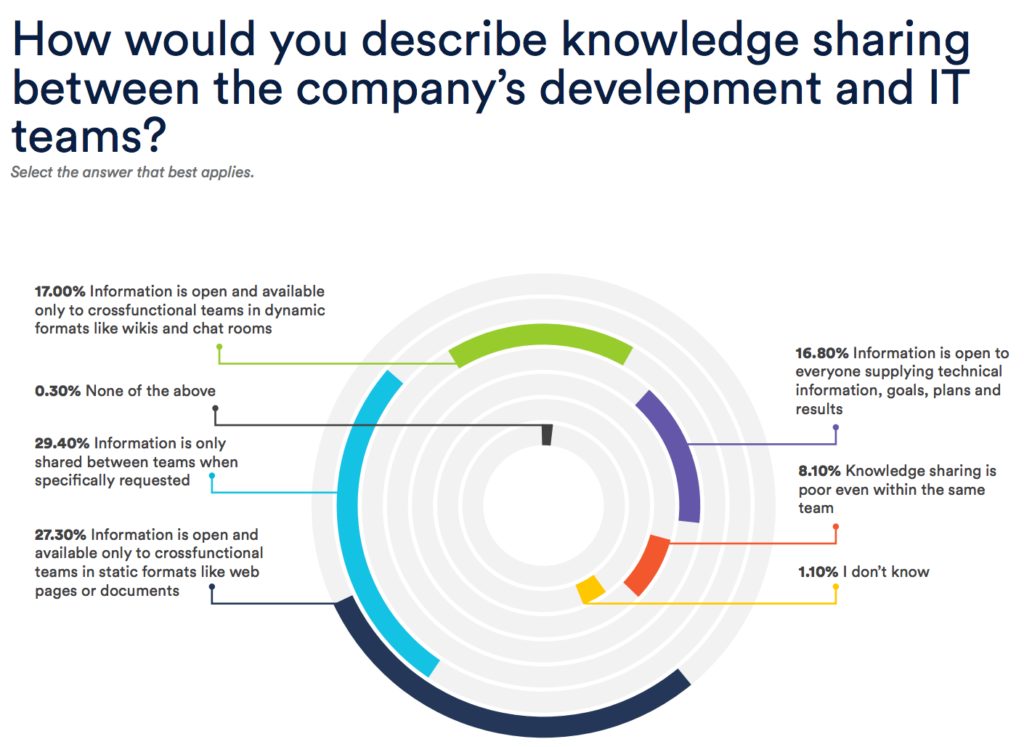DevOps Culture: Sharing Tools Is Not Enough

The success of DevOps culture depends on the success of tools for sharing information between your development and operations teams — unless your tools, practices and philosophies are aligned, you won’t achieve the high velocity of quality product you’re aiming for. Without transparency of information through proactive updates, and collaboration between the two teams, your organization could lose out on DevOps as a key opportunity for competitive advantage.
Puppet’s State of DevOps Survey revealed that organizations classified as top DevOps performers have 200 times more frequent deployments, 24 times faster failure recovery, and a three times lower rate of change failure. However, more than 80 percent of respondents reported that development and operations share at least some tools in a 2017 DevOps maturity study from xMatters and Atlassian. Simply having tools for sharing information between teams is not enough.
The point is that DevOps culture is strong, but only to a point, and simply implementing the right tools may not be sufficient to achieve true velocity. While the value of real-time, targeted communications between development and operations is a known entity, the top-performing teams think about sharing technology a little differently.

Do those with development and operations responsibilities share tools?
Why sharing tools isn’t the whole solution
There’s nothing wrong with sharing tools. They’re a highly effective way for development and operations to collaborate, especially in a workplace where distributed teams are more common. In fact, they’re critical. However, the types of sharing tools and the ways they’re used may not be effective enough for DevOps organizations that struggle with deployments, recovery and failure. Unless you’re sharing the information that comes from your systems, you’re not accomplishing much.
The Atlassian and xMatters DevOps maturity study revealed that organizations using platforms for sharing experience mixed success. As many as 90 percent of respondents report their organizations do share information, but the success is mixed. What’s the difference in sharing tools between top-performing DevOps organizations and their less successful counterparts, especially when it comes to key metrics of success such as deployment frequency, failure recovery and change failure rates?

How would you describe knowledge sharing between the company’s development and IT teams?
Are high-performing DevOps teams using tools differently?
Only 17 percent of respondents in the xMatters and Atlassian study stated their organization is open to everyone on development and operational teams supplying technical information, goals, plans and results. The remaining 83 percent of organizations stated that information is available for limited periods of time, in limited static formats, or only to groups who request it.
Even the best sharing tools can’t overcome a culture where information isn’t freely available. Hoarding information or creating organizational silos by using sharing technologies to send static reports to certain people hurts trust and slows down your progress.
Achieving true transparency in DevOps organizations
DevOps culture should be a tool for accelerating an organization’s product development and deployment lifecycles. If your information flow is limited or non-continuous, it’s a barrier to unlocking the results of a truly DevOps-based organization. To achieve the results of top-performing teams, developing, documenting and automating processes for sharing information through tools could be what it takes to make DevOps work for your organization.
Are there gaps in your DevOps pipeline? Check out the FREE xMatters & Atlassian: 2017 DevOps Maturity Survey Report. Ready to try out xMatters? Let us show you how it can transform your operations — request your demo today.

